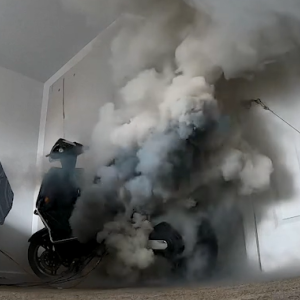
Experiments Investigating Explosion Hazards from Lithium-ion Battery Thermal Runaways in Residential Garages Conclude
The Fire Safety Research Institute (FSRI), part of UL Research Institutes, alongside UL’s Fire R&D team, completed outdoor experiments in Western Illinois as part of The Impact of Batteries on Fire Dynamics research project. The experiments, directed by FSRI research engineer Adam Barowy, expand on an existing U.S. Department of Energy project led by UL Solutions which investigates the impact of fire dynamics of lithium-ion batteries in residential compartment fires. Prior research demonstrates propagating thermal runaway in lithium-ion battery packs installed in a residential energy storage system (ESS) can generate explosion hazards. The latest experiments provide consequence data that relate the flammable gas release volume of typical lithium nickel-cobalt aluminum oxide (NCA) and lithium iron phosphate (LFP) batteries to explosion severity and hazards.
Demographic data suggests that the most common residential installation location is anticipated to be inside an attached two-car garage, as the number of installations continues to increase. For these experiments, FSRI designed and constructed a 24 ft by 24 ft two-story compartment to represent a two-car garage. The compartment was built using construction materials and methods typically found in residential structures built in the last 40 years. To provide the directional strength of a fully assembled residential structure, the footprint and assembly included adjacent room volumes and a second floor.
Overall, three experiments were run using two flammable gas mixtures (NCA and LFP) derived from commercial testing with the UL 9540A methodology including gas chromatography to determine gas composition. As UL Solutions saw in commercial testing, lithium-ion battery thermal runaway effectively always produces a flammable mixture of gas and vapor and typically provides several possible means of ignition. Two of the experiments used a process of metering precise quantities of manufactured battery gas followed by ignition via a pyrotechnic source. The manufactured battery gas used in these experiments included the major components of real battery off-gas: CO, CO2, H2, and CH4 (to represent hydrocarbons). The final experiment used an 18 kWh battery pack intentionally overheated to thermal runaway.
Experiments were designed to simulate:
- Prompt-ignition of flammable off-gas emanating from an ESS lithium-ion battery experiencing propagating thermal runaway
- Delayed-ignition deflagration occurring after ESS lithium-ion battery off-gas accumulates and mixes within the garage volume
- Propagation of thermal runaway in an 18 kWh NCA battery pack mockup
Following a review of the data collected, a technical report with size-up and tactical considerations for incident response will be delivered. The data may also enable advancement of explosion safety requirements in the model codes and in lithium-ion battery safety standards.

